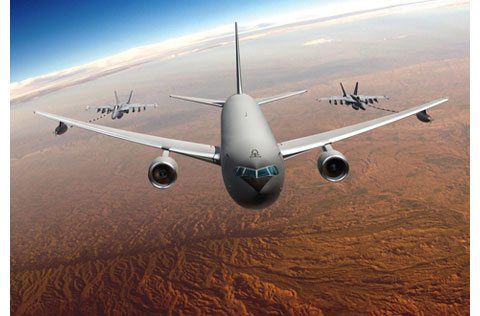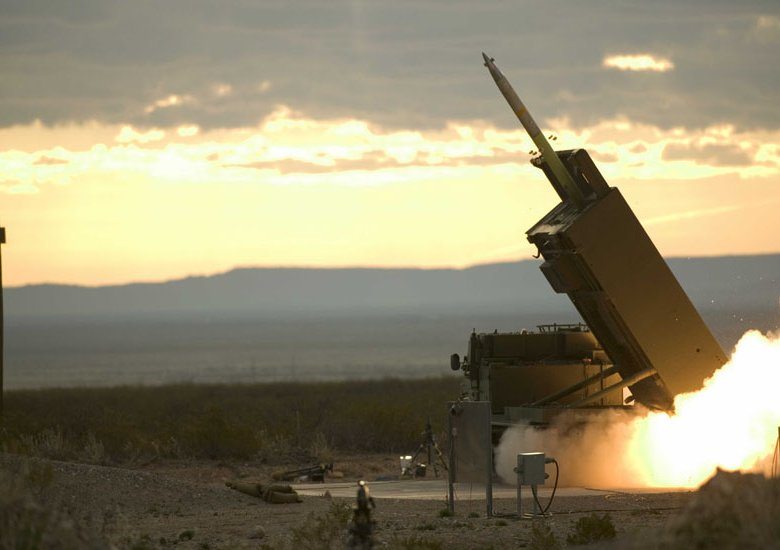Air Force officials announced today Altus Air Force Base, Okla., as the preferred alternative for the KC-46A formal training unit (FTU).
McConnell AFB, Kan., was selected as the preferred alternative for the first active duty led KC-46A main operating base (MOB 1) and Fairchild AFB, Wash., and Grand Forks AFB, N.D., are the reasonable alternatives.
The preferred alternative for the first Air National Guard KC-46A main operating base (MOB 2) is Pease Air Guard Station, N.H., and Forbes AGS, Kan.; Joint Base McGuire-Dix-Lakehurst, N.J; Pittsburgh IAP AGS, Pa., and Rickenbacker AGS, Ohio, are reasonable alternatives.
During detailed, on-the-ground-site surveys of each candidate base, the major commands evaluated the bases against operational and training requirements, potential impacts to existing missions, housing, infrastructure, and manpower.
The site survey teams also developed cost estimates to bed down the KC-46A for each candidate base. The results of the surveys were briefed to the Secretary of the Air Force Michael Donley and Air Force Chief of Staff, Gen. Mark A. Welsh III, who selected the preferred and reasonable alternatives for this mission.
“The Air Force chose these locations using operational analysis, results of site surveys, and military judgment factors,” said Timothy Bridges, the Air Force deputy assistant secretary for installations.
Altus AFB was selected as the preferred alternative for the KC-46A FTU because it provides great training opportunities, he said. There is significant benefit of collocating KC-46A trainers with both tanker and heavy receiver aircraft for training purposes.
Altus AFB also has better infrastructure capacity, greater fuels dispensing capability, and requires considerably less new construction, Bridges added.
There is already a formal training wing located at Altus; therefore, less active-duty manpower will be required to stand up this training operation.
McConnell AFB was selected as the preferred alternative for the KC-46A MOB 1 because it has the lowest military construction costs and is located in a region of high air refueling receiver demand. McConnell AFB already has 44 KC-135 refueling aircraft assigned; replacing those aircraft with 36 KC-46A aircraft will require the lowest manpower adjustments of the candidate installations.
Since the KC-46A is a replacement for the KC-135, 36 KC-135s will be retired or transferred.
With the selection of McConnell AFB, the Special Operations Air Refueling training mission will remain close to its primary customers in the Southeast. McConnell is also an ideal central location for the new KC-46A Regional Maintenance Training Center.
Pease AGS was selected as the preferred alternative for the KC-46A MOB 2 because of its highly successful existing active-duty association, which would lead to the lowest active-duty manpower required and its location in a region of high air refueling receiver demand.
Selection of Pease AGS will minimize the challenge of fielding a new weapon system and avoid having to simultaneously establish a new active association.
“Bringing the KC-46A online is an important step in recapitalizing a tanker fleet that has been a leader in air refueling for more than five decades,” Welsh said. “This new age aircraft will achieve better mission-capable rates with less maintenance downtime, improving our ability to respond with rapid, global capability to assist U.S., joint, allied and coalition forces and better support humanitarian missions.”
Welsh explained the 179 planned KC-46A aircraft are just the first phase of a three-phase effort to replace more than 400 KC-135 and 59 KC-10 aircraft. The first phase of tanker recapitalization will complete deliveries in FY2028. He went on to emphasize the importance of continuing KC-135 modernization efforts.
“I want to stress that the KC-135 units not replaced with the KC-46A will continue to fly the KC-135R for the foreseeable future,” Welsh said. “Throughout tanker recapitalization, the Air Force is committed to ensuring continued support of combatant commander requirements.”
The Air Force will also ensure reserve component involvement from day one by establishing active/reserve associations at all U.S. main operating base locations.
“The Air National Guard and Air Force Reserve are vital to accomplishing our air refueling mission,” Welsh explained. “Therefore, the ability to recruit for and maintain a strong reserve component association was a major consideration in this basing action.”
“The Air Force began the Environmental Impact Analysis Process (EIAP) in April 2013,” Bridges said. “We look forward to the inputs provided from the communities as we proceed through the environmental impact analysis.”
“Once the requirements of the environmental impact analysis process are complete, the Air Force will make its final basing decision,” he said.
Reasonable alternatives will continue to be evaluated during the EIAP. Subsequent KC-46 decisions will use similar criteria; therefore, candidate installations will likely compete well for future Continental United States basing decisions.
The KC-46A will provide improved capability, including boom and drogue refueling on the same sortie, world-wide navigation and communication, airlift capability on the entire main deck floor, receiver air refueling, improved force protection and survivability, and multi-point air refueling capability.
The FTU and MOB 1 will begin receiving aircraft in fiscal year 2016. MOB 2 will receive aircraft in fiscal year 2018.











